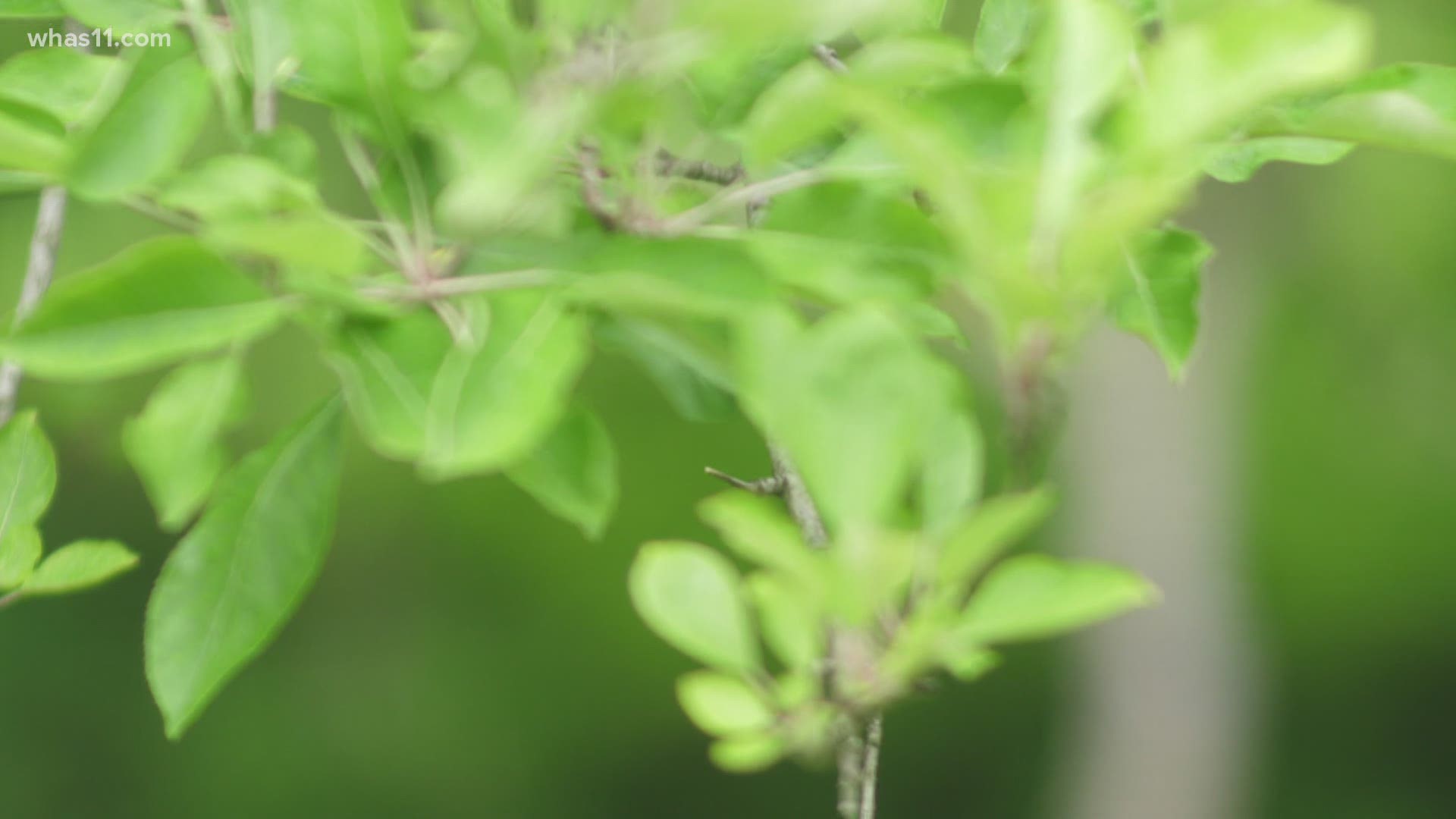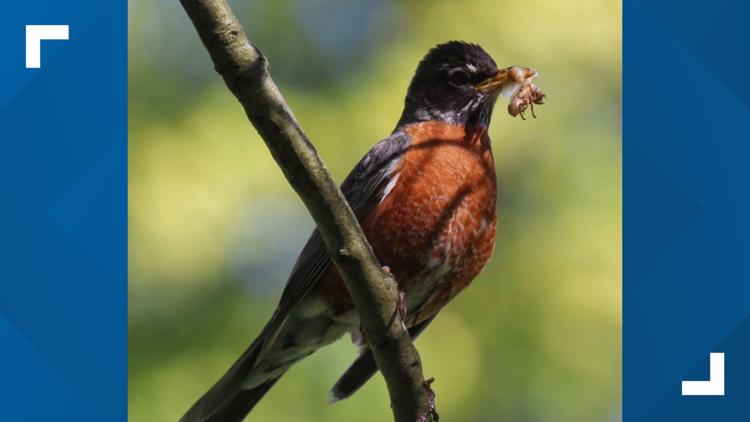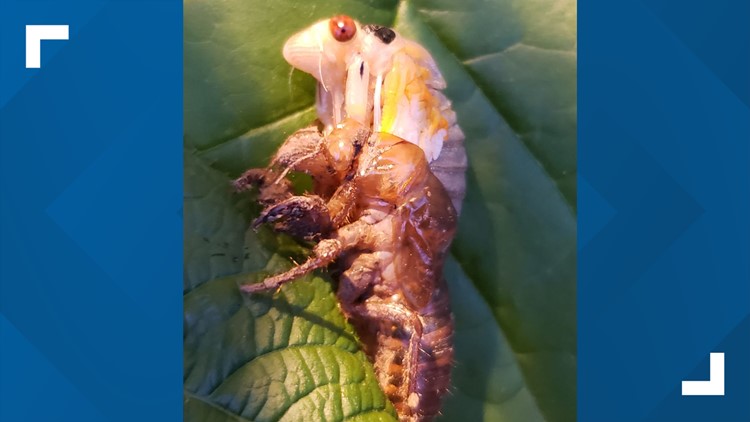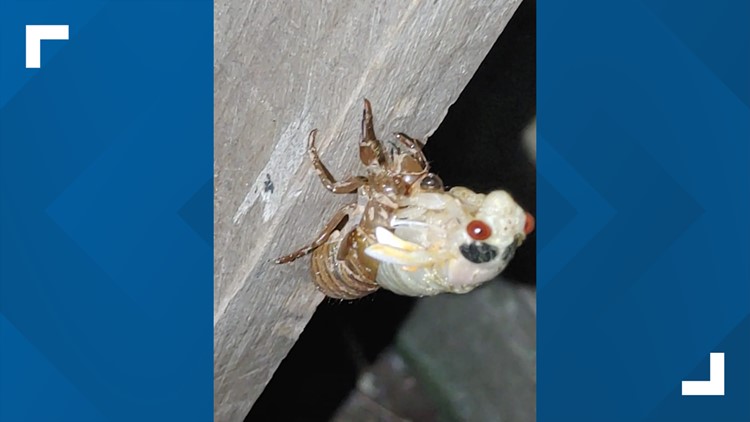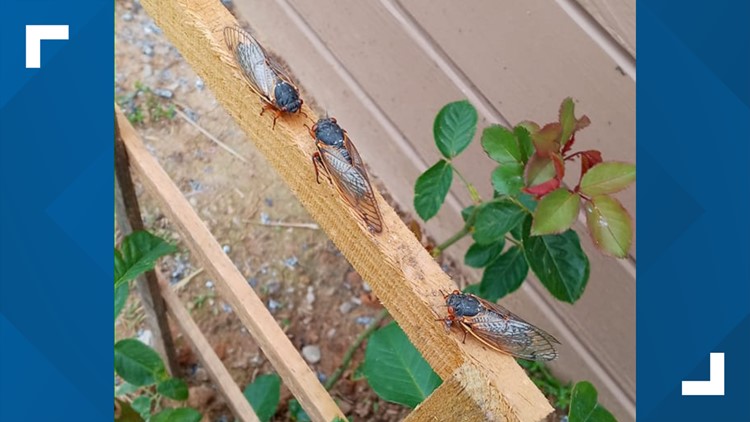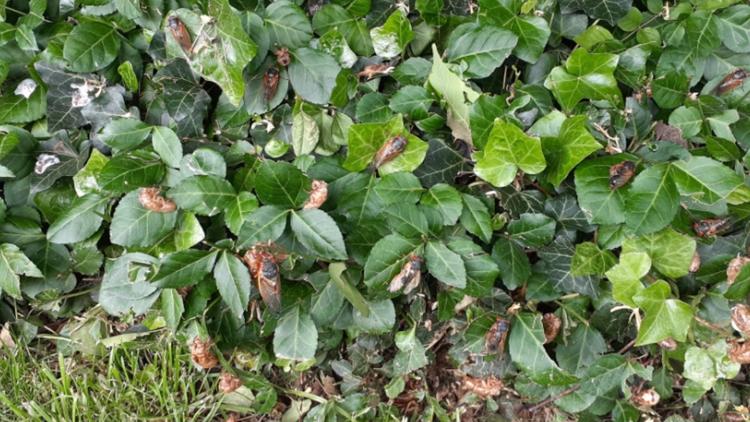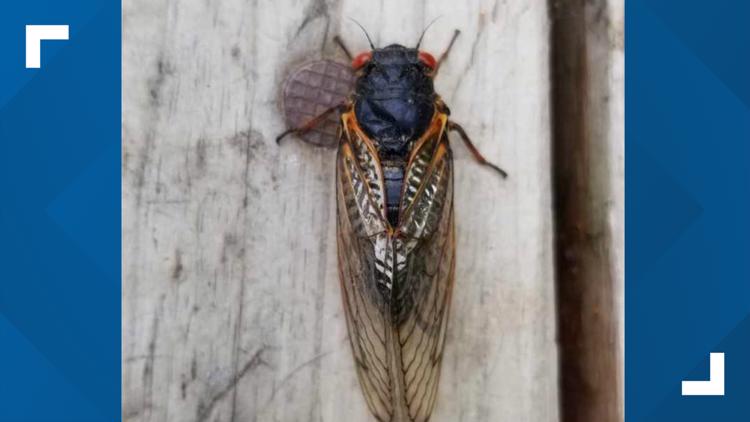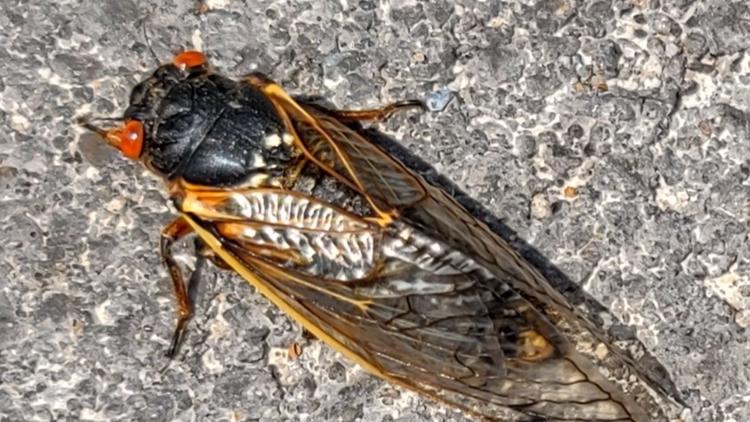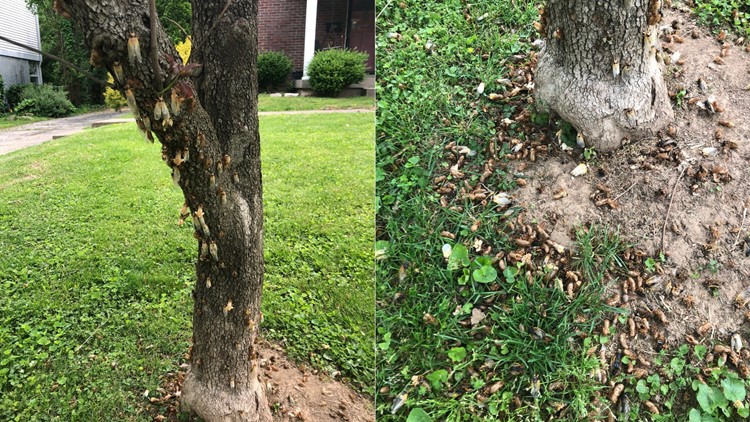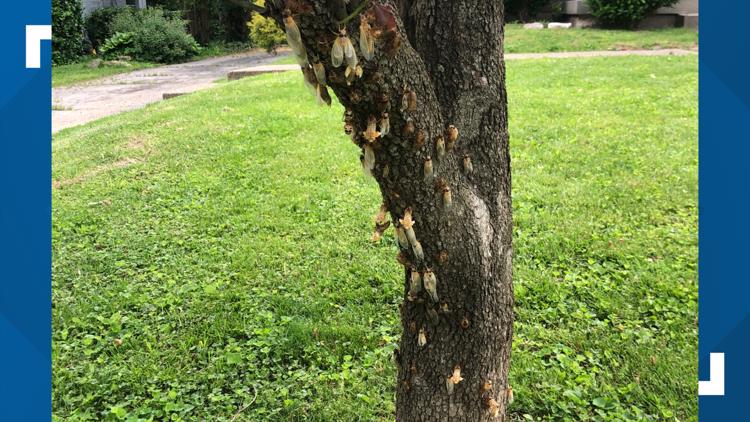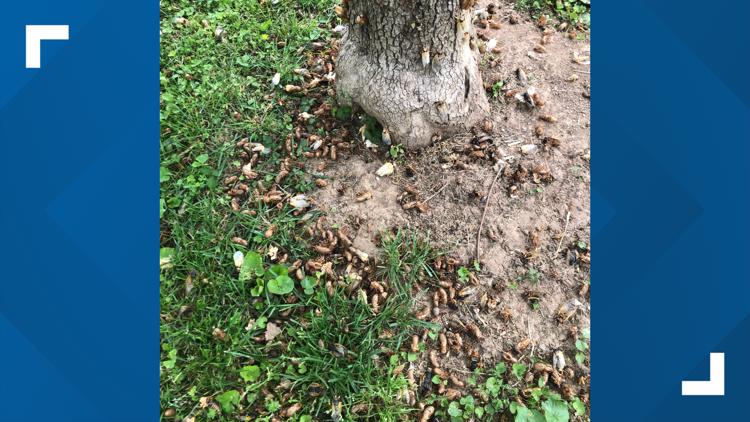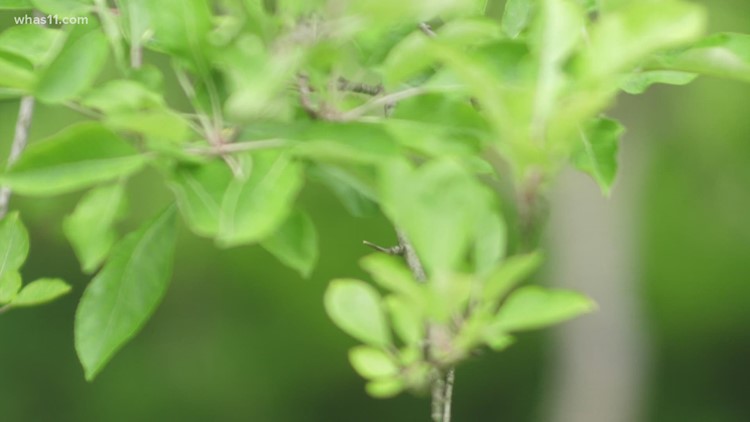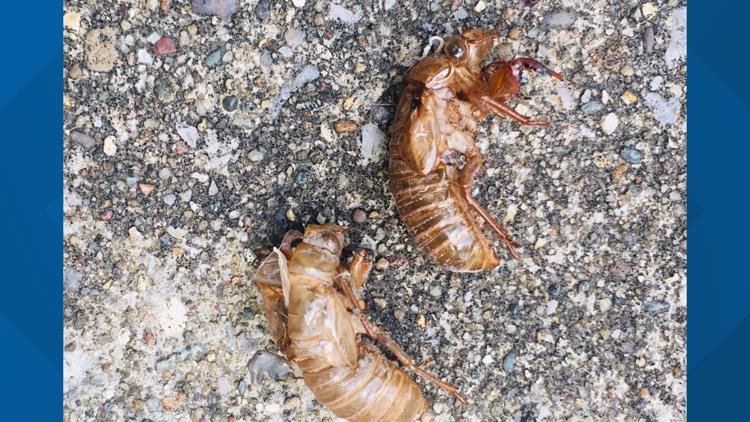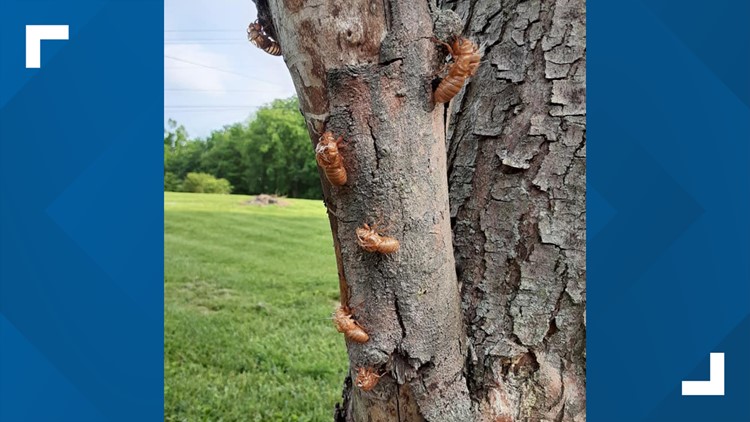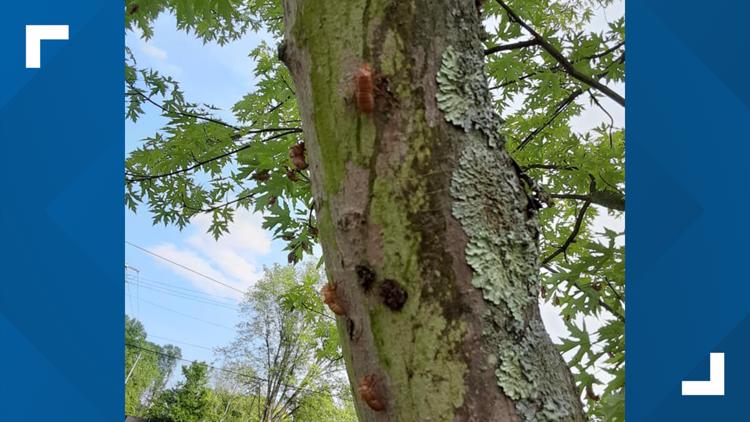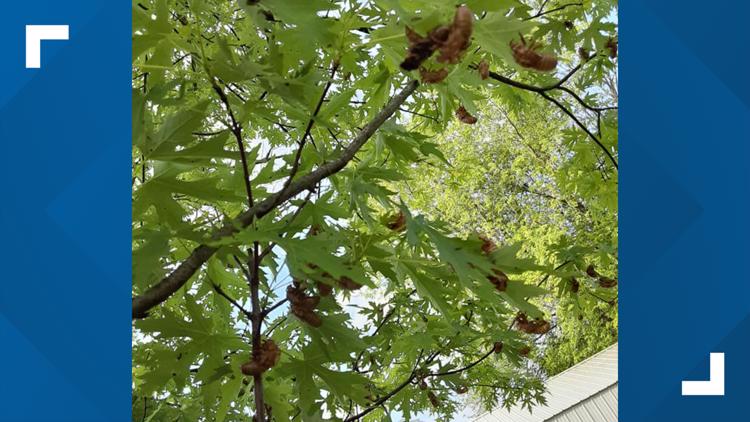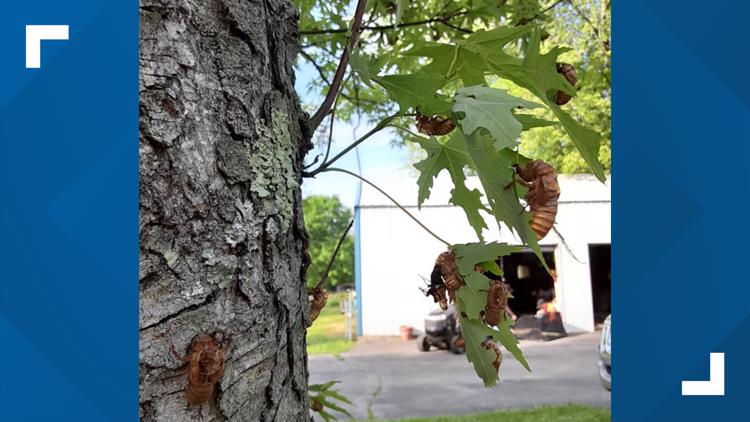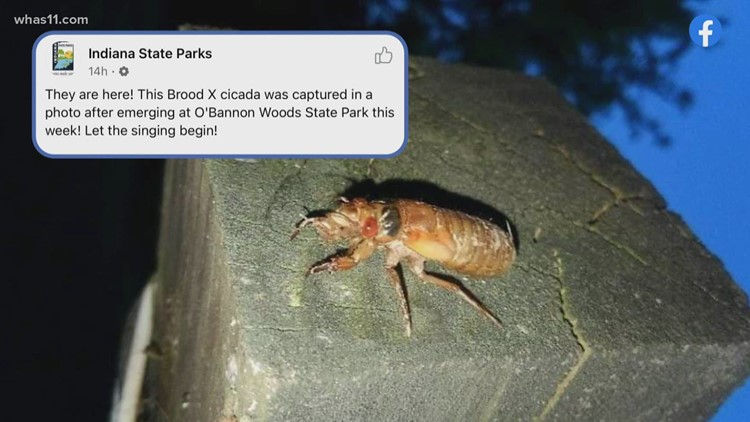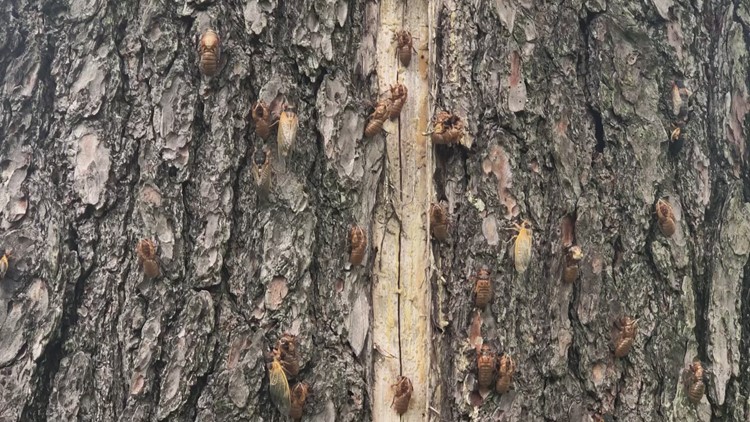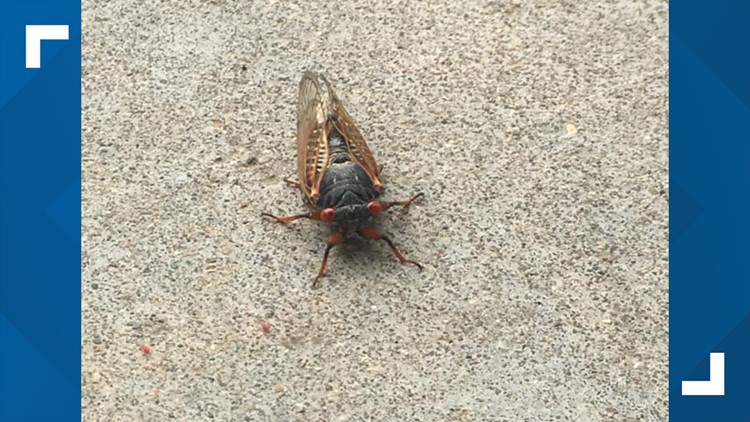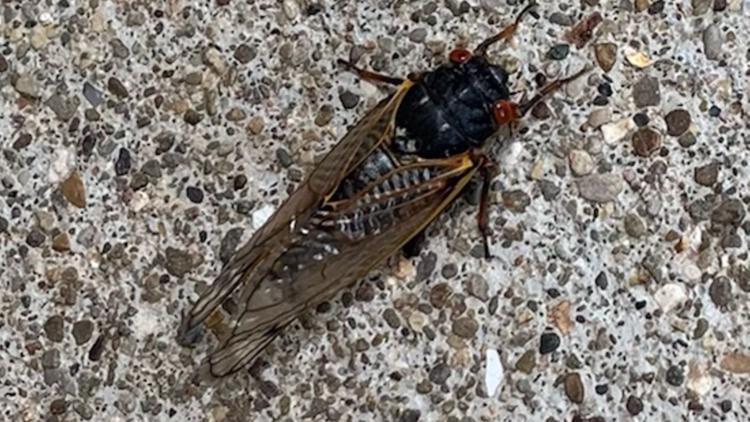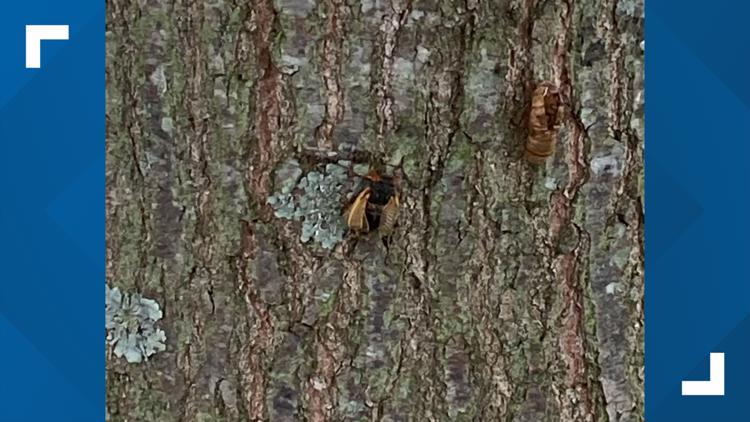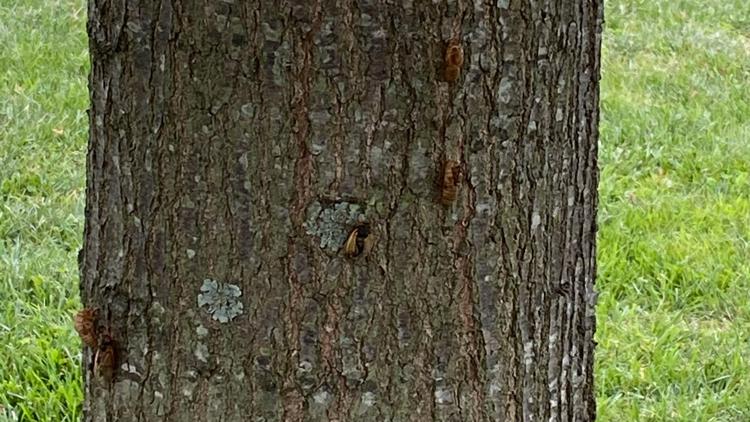LOUISVILLE, Ky. — Walking through her field of apple trees, Helen Keilkopf recalled when they were just saplings, and cicadas started to emerge.
"Cicadas would walk up the side and they would nibble their way up and when they did that the trees would curl over," said the owner of Hidden Hollow Orchard.
To understand what's happening at an entomological level, we asked an entomologist.
"The female has an ovipositor which looks a little bit like a sword and that is her egg-laying device. She goes through and cuts a slit into the thin bark of twigs and branches [and] inserts eggs," University of Kentucky extension entomologist Jonathan Larson said.
They'll lay about a dozen eggs with each cut, making several cuts in each tree. Then, they fly off to do the same thing somewhere else.
It causes some unexpected pruning and a potential loss of income if you don't protect your trees ahead of time.
Here's how the experts do it:
Each sapling at Hidden Hollow Orchard has sticky tape wrapped around its base. That keeps cicadas from climbing up and cutting into the branches.
Larson said you can take that a step further by wrapping small-holed netting around your trees. However, he pointed out that needs to be on for 6-8 weeks to be fully effective. "It is something that can cause a lot less headache for you in the future."
After that, you can sit back and enjoy the sound of a Brood X summer.
PHOTOS | Brood X cicadas emerging in Kentucky, So. Indiana
RELATED VIDEO

